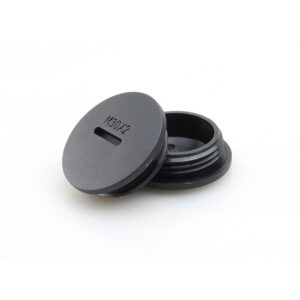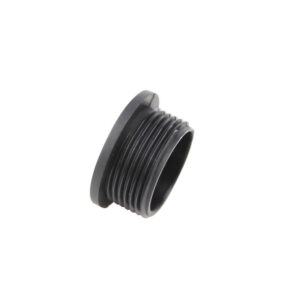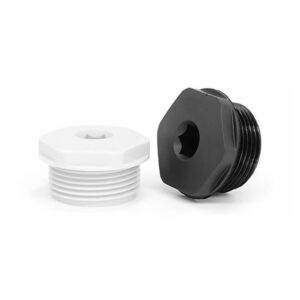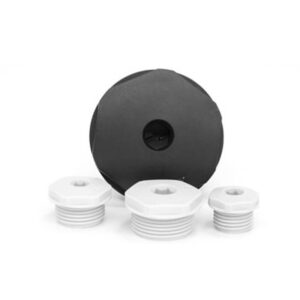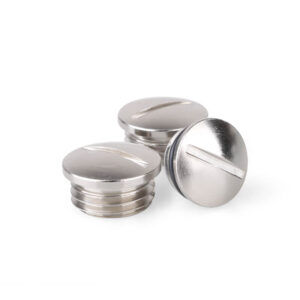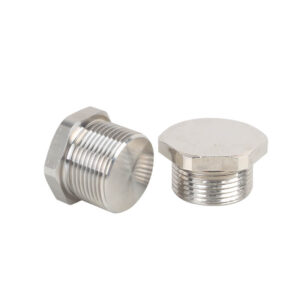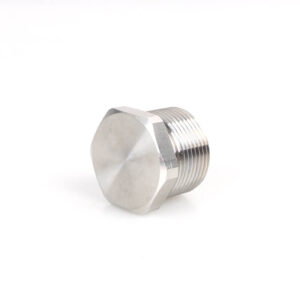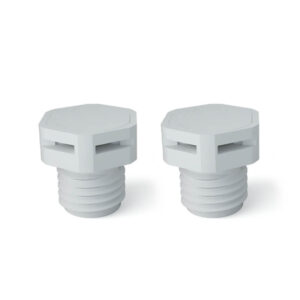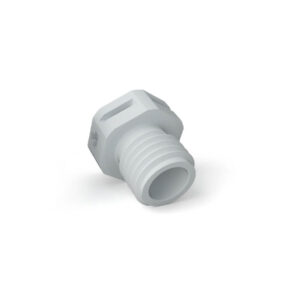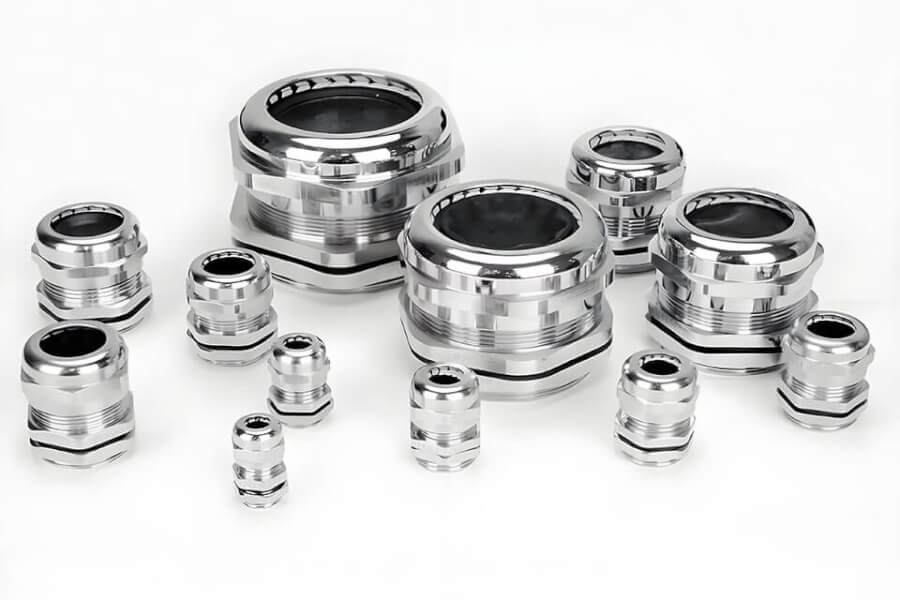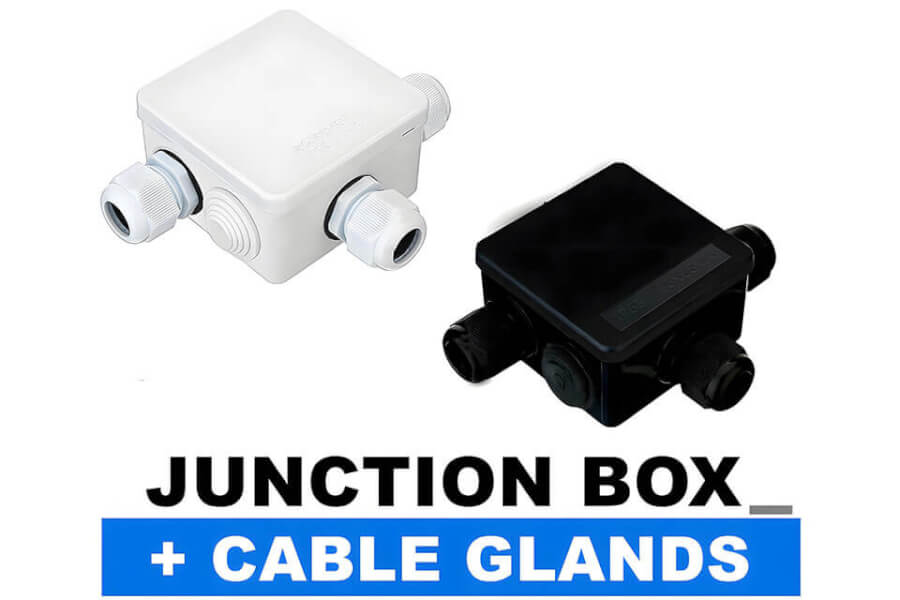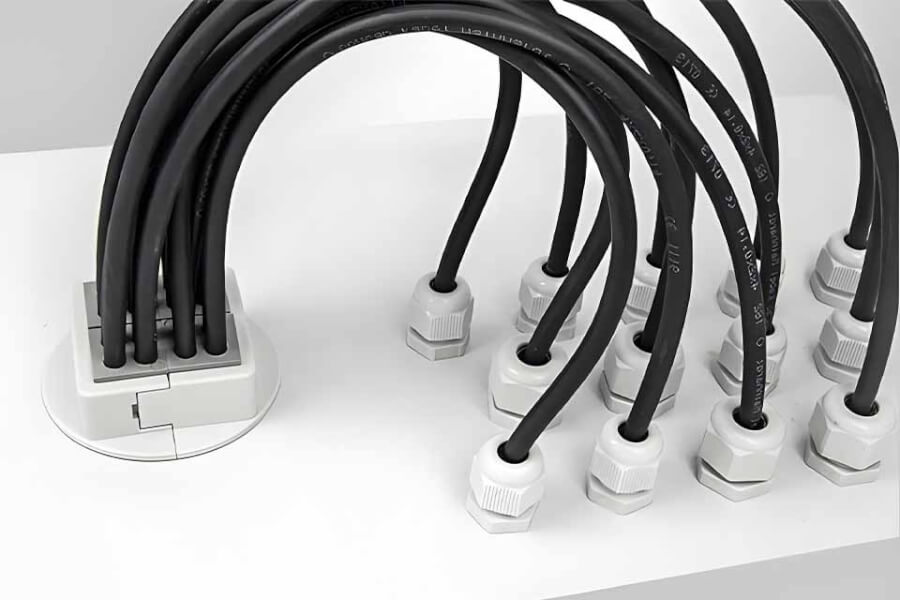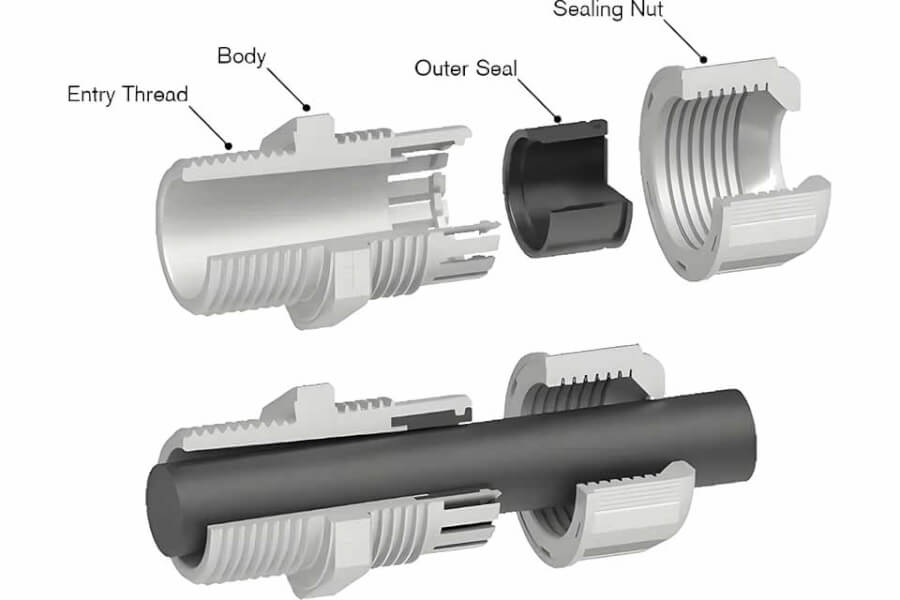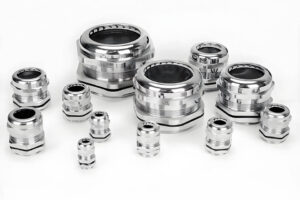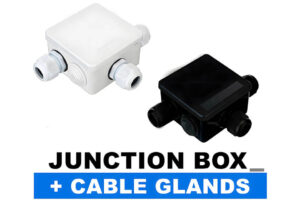Table of Contents
What is a Cable Gland? Why Making Them Right Matters**
Imagine wires like little roads for power or messages. These roads need safe exits and entrances into boxes or machines. That’s what a cable gland does! It’s a small part, but super important.
Problem: If wires just go through a hole, bad things can happen. Dust can get in. Water can sneak inside. The wire could get pulled out or damaged. In some places, like where there are gases that can explode, a tiny spark could be very dangerous. Using the wrong part, or a poorly made one, is a big risk.
Agitate: Think about it! Water damage can break expensive machines. A loose wire could stop everything, costing lots of time and money. In places like an Oil & Gas Industry rig or a factory with fumes, a bad seal could lead to fire or explosions. Not meeting safety rules (ATEX Directive, UL Certification) means big trouble, maybe even fines or project shutdowns. You need parts you can trust, made the right way.
Solution: That’s why the cable gland production process is so vital! A well-made cable gland acts like a strong gatekeeper. It seals the hole tight, stops pulls (cable strain relief design), and keeps things safe. We, as a leading cable gland manufacturer in China, understand this deeply. We make strong, reliable glands like plastic water proof cable gland, metal water proof cable gland, and special multi hole cable gland options. We even make the boxes they go into, like our sturdy junction box range. Let’s look at how these critical parts are made, and how we make sure they are perfect for you. Our goal is safe cable entry solutions.
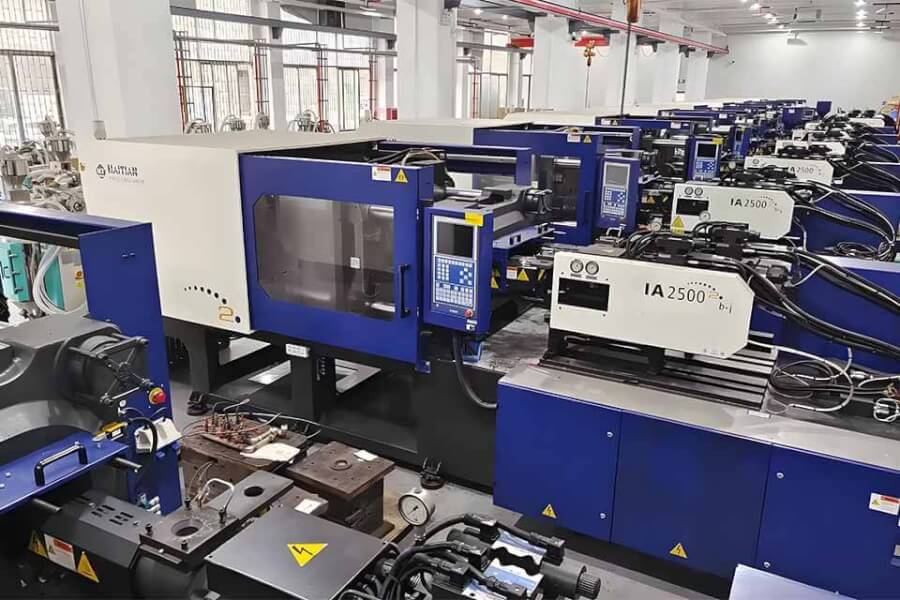
The Best Start: Choosing the Right Stuff (Raw Materials)**
Making a great cable gland starts with great materials.
Problem: Using cheap or weak stuff is asking for trouble. A gland made from poor metal might rust fast. Bad plastic might crack in the sun or cold. Seals might leak if the rubber is not good quality.
Agitate: Imagine a gland failing because the material wasn’t right for the job. Maybe it rusts away on a ship (Marine Engineering needs good stuff!). Maybe it breaks in the cold on an outdoor machine. This failure means repairs, downtime, and maybe even danger. It reflects badly on your whole project!
Solution: We are very careful about our gland material selection. We know that quality starts here. We choose materials based on where the gland will be used.
Metals:
- Brass C36000: Strong, doesn’t rust easily, good for many jobs. We use high-quality brass.
- Stainless Steel 316: Super tough! Great for salty air (like near the sea) or where chemicals are used. Resists rust very well (Corrosion-resistant coatings help too!). Our stainless steel gland fabrication uses top grades.
- Die-cast aluminum or Zinc alloy casting: Lighter options, still strong for certain uses.
Plastics (Polymers):
- Polyamide 6.6: Very common, strong plastic. Used in many of our plastic water proof cable gland products.
- Flame-retardant polymers: Special plastic that doesn’t burn easily, for extra safety. We know fire-resistant gland materials are important.
- Composite gland materials: Mixing materials for special jobs.
- We make sure our plastics are UV-resistant materials if they need to be outside in the sun. Think about Renewable Energy Sector projects like solar farms!
Seals and Gaskets:
- Nitrile Rubber (NBR): Good for sealing against oil and water. A common choice for rubber gasket molding.
- Silicone overmolding: For high heat or special seals.
- PTFE sealing components: For tough chemicals.
- We might use EPDM or other elastomers too. We make sure the compression seal fabrication is perfect.
Coatings:
- Nickel plating or chrome plating (Gland plating (nickel, chrome)): Makes metal look good and resist rust even better.
- Gland galvanization process: Another way to protect metal.
- Powder coating processes: Tough paint for color and protection. Can be eco-friendly coatings.
- Electropolishing finishes: Makes stainless steel extra smooth and clean for hygienic gland design.
We work with good suppliers, maybe even big names like DuPont for polymers, to get reliable materials. And we make sure everything follows rules like RoHS-compliant materials (no bad chemicals!). Our supply chain logistics ensure we always have good stock.
Making the Parts: Step-by-Step Precision**
Having good stuff is just the start. Making the gland needs care and skill.
Problem: If you make parts carelessly, they won’t fit right. The threads might be wrong. The seal might not be tight. The gland could break easily.
Agitate: A badly made gland is useless, or worse, dangerous. Imagine trying to screw it in, but the threads don’t match (NPT thread machining vs. Metric needs to be exact!). Or tightening it, only to have it crack. Water gets in, a wire pulls loose… all because the making was sloppy. This means Gland failure analysis later, which costs time.
Solution: We use modern methods and careful checks in our cable gland production process. Our manufacturing strengths lie in precision and quality.
Design and Planning:
- It starts with a plan! We use computers (CAD/CAM design for glands) to draw the gland exactly right. We plan the Thread tolerances very carefully. We think about gland bending radius for the cable.
- Need something special? We do Custom gland fabrication. We can make a sample fast using Gland prototyping techniques, maybe even 3D Printing.
Making the Body and Parts (Material Forming):
- For Metal Glands: We use smart machines! CNC machining for glands on CNC Lathes cuts the metal (Brass C36000, Stainless Steel 316) perfectly. This gives us exact shapes and smooth Threaded cable gland assembly. Sometimes Brass forging techniques are used for extra strength. Thread rolling makes strong threads.
- For Plastic Glands: We use Injection molding for cable glands. Hot plastic is pushed into a special shape (a mold). We need good Mold design for glands to make perfect parts every time. Big machines like those from Husky Injection Molding Systems might be used in the industry. Polyamide cable gland molding is a key process for us. Gland extrusion processes might be used for seals.
Putting It All Together (Assembly):
- The body, the seal (sealing ring extrusion creates these), the nut – they all come together. We use careful waterproof gland assembly steps.
- For special glands like armored cable gland engineering, there are extra parts to lock onto the cable’s metal cover.
- Explosion-proof gland design (ATEX-compliant glands) needs very precise assembly to keep sparks inside.
- We make sure Gland locking mechanisms work smoothly but hold tight. We might use Gland crimping methods for some parts.
- Multi-hole cable glands need special seals like our Multiple Hole Bushings.
- We use Automated assembly lines for speed and to make sure every gland is the same. ERP systems for manufacturing help manage this. Maybe systems like SAP are used in big factories. Industry 4.0 in gland production means using smart tech.
Finishing Touches (Surface Treatment):
- Making it look good and last longer! This could be Gland surface finishing like polishing.
- Adding protective layers: Gland plating (nickel, chrome) or Powder coating processes.
- Marking: We use Laser engraving for branding to put our name and important info (like safety codes UL, ATEX) on the gland.
Packing:
- Careful Gland packaging standards protect the glands until you use them.
Checking Everything: Quality and Safety Tests**
Making the gland is one thing. Making sure it’s perfect is another.
Problem: How do you know a gland will work? Just looking isn’t enough. It might look okay but fail when you need it most.
Agitate: Using untested glands is like gambling with safety and money. What if it leaks in the rain? What if it doesn’t handle the pressure? What if it fails a safety check (Gland certification processes)? Your project could be rejected, or worse, an accident could happen. You need proof!
Solution: We test, test, test! Gland quality assurance is key to our promise. We don’t just hope they work; we prove they work.
- Does it Keep Stuff Out? (Ingress Protection): We test for IP Ratings. Like IP68-rated gland production, meaning it keeps out dust and can go underwater! We use special IP Code Testing Labs or equipment for Ingress protection testing. This checks waterproof gland assembly. NEMA 4X-rated glands are similar for the US market (National Electrical Manufacturers Association (NEMA)).
- Can it Handle Tough Weather? (Environmental):
- Salt Spray Testing: We put glands in a misty, salty box (Salt Spray Chamber) to simulate sea air (tests corrosion-resistant coatings). Follows rules like ASTM B117. Vital for Marine cable gland production.
- Temperature Tests: Making sure it works in hot and cold (Thermal cycling tests, High-temperature seals).
- UV Tests: Checking UV-resistant materials don’t break down in sunlight.
- Is it Strong Enough? (Mechanical):
- Pull Test: Making sure the cable strain relief design holds the cable tight. Checking Gland load capacity.
- Torque Test: Checking how much twisting the threads and nut can take (Gland torque specifications). We use Torque Wrenches.
- Vibration Test: Making sure it won’t shake loose (Anti-vibration gland design, Gland vibration testing). Important for machines.
- Is it Safe for Dangerous Areas? (Hazardous Location):
- Explosion Tests: For ATEX-compliant glands and IECEx System approved ones (Hazardous area glands). Making sure they contain any spark. Companies like BARTEC or Hawke International specialize here.
- Electrical Tests: Checking Gland electrical continuity for safety grounding. Making sure EMC shielding in glands works (Gland EMI/RFI shielding) to stop electrical noise.
- Is it Made Right? (Dimensional & Material Checks):
- We measure parts carefully (Gland dimensional verification) to match CAD/CAM design for glands. Checking Thread tolerances.
- We check the materials are what they should be (RoHS-compliant materials).
- We use Lean Manufacturing and Six Sigma ideas to reduce mistakes. ISO 9001 helps guide our quality systems. Gland batch testing ensures consistency.
We follow global rules like IEC 62444 (the main cable gland standards) and Gland ISO standards. We aim for certifications like UL-certified gland manufacturing and ATEX. Compliance with British Standards Institution (BSI) or Gland DIN standard compliance might also be needed. We keep records of our tests. This proves our glands are safe and reliable.
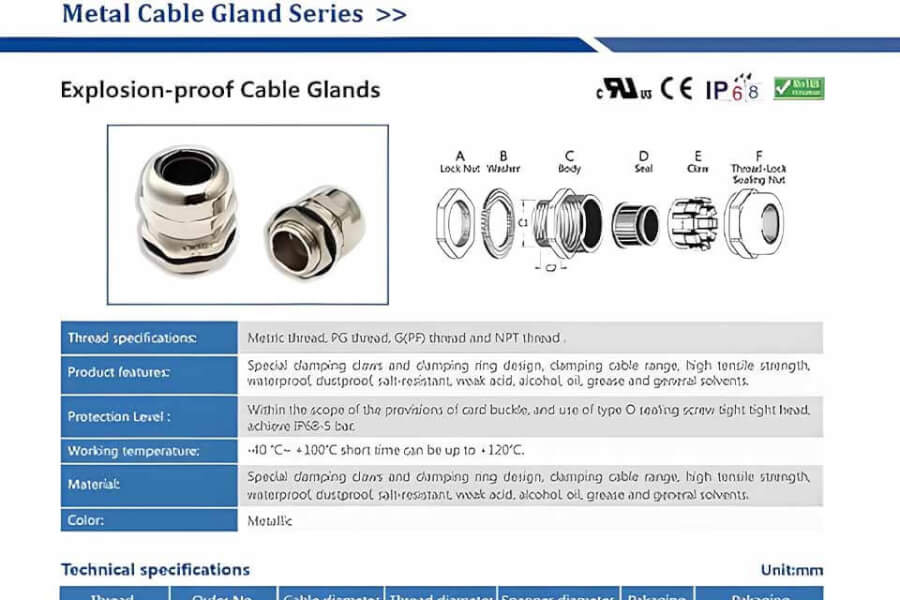
Glands for Every Job: Different Types and Uses**
Not all jobs are the same, so you need different kinds of glands.
Problem: Using a basic gland for a tough job won’t work. You need the right gland for the right place.
Agitate: Putting a simple plastic gland in a super hot place? It might melt! Using a non-armored gland on an armored cable? It won’t grip right! This leads to failures and rework. Choosing wrong costs you.
Solution: We make many types because we know every job has needs!
- By Material:
- metal water proof cable gland: Strong, good for tough places. Brass, Stainless Steel.
- plastic water proof cable gland: Lighter, often lower cost, good for many uses. Polyamide.
- By Use:
- Explosion-proof / Hazardous Area Glands: For Oil & Gas Industry, chemical plants. Super safe design. Meets ATEX Directive, IECEx System. Companies like CMP Products, Hawke International, Eaton, BARTEC are known here.
- EMC Glands: Stop electrical noise. For sensitive electronics. Needs good EMC shielding in glands.
- Marine Cable Glands: Made from Stainless Steel 316, resist salt water. Tested with Salt spray testing.
- High Temperature Glands: Use special seals (Silicone, PTFE) to handle heat.
- Hygienic Glands: Super smooth (Electropolishing finishes) for food or medical areas.
- By Feature:
- multi hole cable gland: Lets several cables go through one hole safely. Uses special Multiple Hole Bushings. Saves space!
- Armored Cable Glands: Grip the metal armor on some cables.
- Strain Relief Glands: Extra grip to stop pulling.
- Liquid Tight Flexible Conduit Fittings: Connects glands to flexible tubes.
- Breather Drains / Vent Plugs: Lets air pressure equalize but keeps water out.
We can help you pick the right one. Need something unique? Custom gland fabrication is possible. We aim to be your OEM gland manufacturing partner. We also make related parts like our Round Plastic Junction Box to complete your wiring job safely. Check out all options on cagland.com.
- By Material:
Who Makes Cable Glands? Looking at the Industry**
Many companies make cable glands around the world.
- Problem: With so many choices, how do you pick a good supplier? Some might cut corners.
- Agitate: Choosing the wrong supplier can lead to delays (Gland lead time optimization is important!), poor quality, or glands that don’t meet the safety rules you need.
Solution: Look for makers with experience, good materials, strong testing, and the right certifications.
- Big Names: You might hear of CMP Products, Hawke International (often known for explosion-proof glands), Eaton, ABB Group, Siemens, HARTING, Pflitsch (a German gland manufacturer), Jacob GmbH, Weidmüller, or Roxtec (known for multi-cable transit systems). Enclosure makers like Hoffman also offer glands. Pneumatic companies like Norgren might have related fittings.
- Distribution: You can often buy glands from big suppliers like Anixter or RS Components.
- Us (CAGLAND): As a dedicated cable gland manufacturer in China, we offer a great mix of quality, value, and service. We focus on the core products businesses need: reliable plastic water proof cable gland, strong metal water proof cable gland, useful multi hole cable gland, and matching junction box solutions. We control our cable gland production process closely.
The industry uses ERP software to manage making parts. Smart factories (Industry 4.0 in gland production) are becoming more common, using automated assembly lines.
Common Questions Answered (FAQs)**
- Q: How are explosion-proof cable glands different?
- A: They are built extra strong with special seals and long paths for any flame to cool down. They MUST meet strict rules like ATEX or IECEx. We understand explosion-proof gland design.
- Q: What materials last longest in salty air?
- A: Stainless Steel 316 is usually best. High-quality nickel plating on brass also helps a lot. Ask us about our metal water proof cable gland options for tough spots.
- Q: How do I know if a gland is certified?
- A: Look for markings ON the gland (like UL, ATEX symbols). Ask the maker for certificates. We provide proof for our certified products. Gland certification processes are important.
- Q: Plastic or Metal Gland – Which is better?
- A: It depends! Plastic is lighter, often costs less, and won’t rust. Our plastic water proof cable gland is great for many jobs. Metal is stronger, better for very tough spots or grounding. Our metal water proof cable gland uses quality Brass C36000 or Stainless Steel 316.
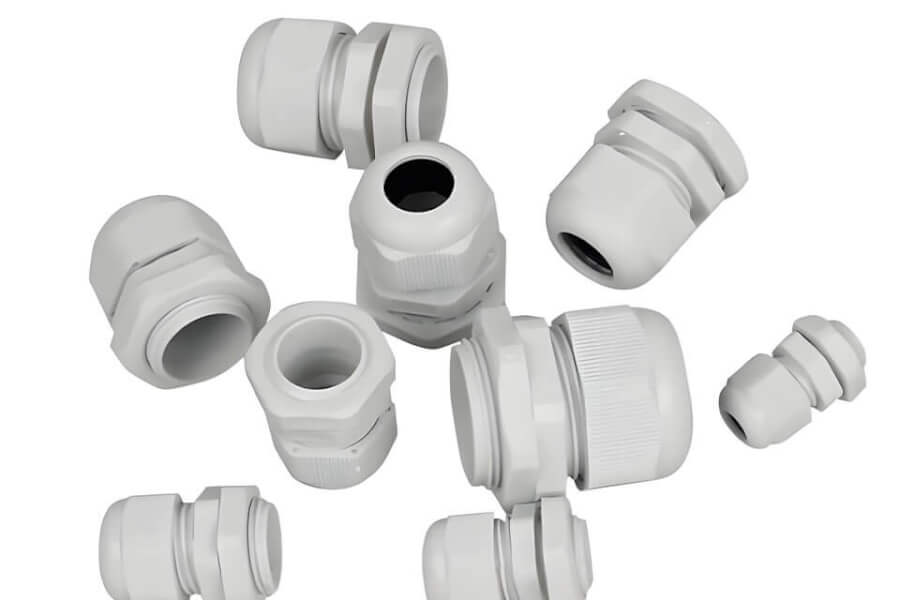
Choose Wisely: Why Good Manufacturing Matters Most**
- Problem: Choosing cable glands based only on the lowest price is risky.
- Agitate: A cheap gland that fails costs far more in the long run – repairs, downtime, safety risks. Don’t let a small part cause a big headache.
- Solution: Making a cable gland correctly takes care, good gland material selection, precise machines (CNC machining for glands, Injection molding for cable glands), and lots of testing (IP Ratings, ATEX-compliant glands, UL-certified gland manufacturing).
We, your cable gland manufacturer in China, focus on this quality. From our standard plastic water proof cable gland and metal water proof cable gland to specialized multi hole cable gland and reliable junction box options, we build safety and reliability into every part.
We use good cable gland tooling, follow international standards (IEC 62444, ISO 9001), and test thoroughly. We consider things like Thermoplastic vs. thermoset glands, Gland pressure ratings, and Gland electrical continuity. We aim for Gland warranty standards that give you peace of mind.
Trust us for your cable entry solutions. Visit cagland.com to learn more and see how our manufacturing strength can benefit your project. We help keep your connections secure!
News & Blog
Discover what cable glands are, why they matter, and how the right choice protects cables, boosts safety, and ensures reliable performance in any environment.

